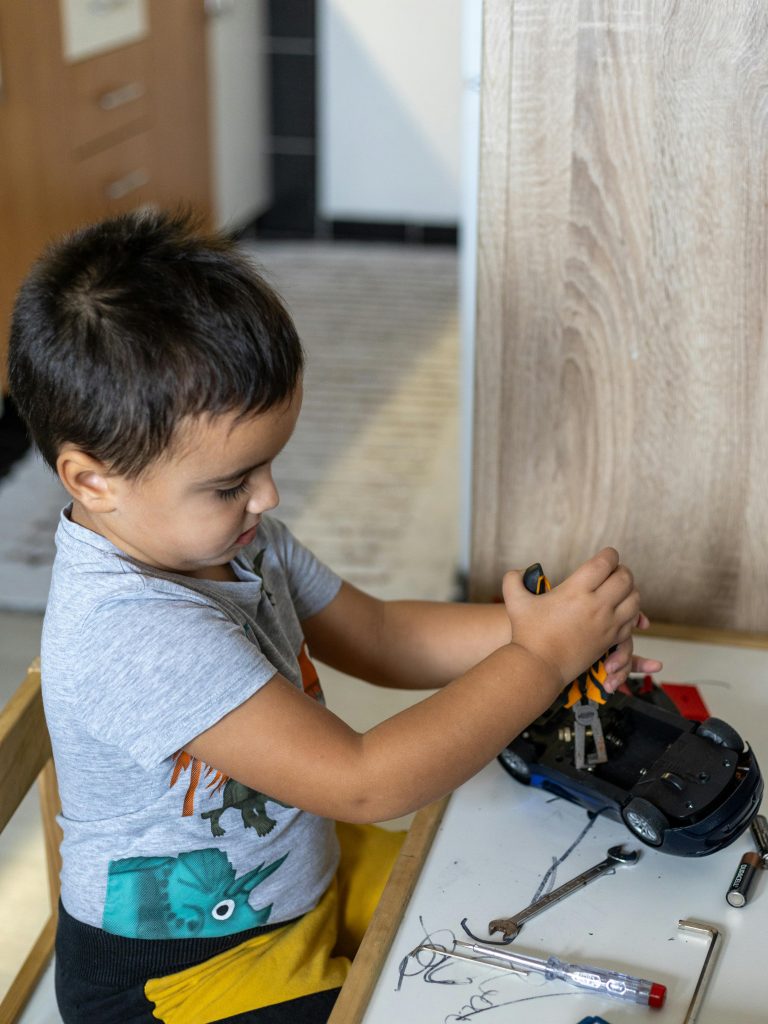Problem Solving capacity is an imperative issue for child development and parent should concern to grow this skill. Among the most significant life skills that children should develop, problem solving is one of them.

Table of Content
- Why Problem-Solving Matters in Childhood
- What Shapes a Child’s Problem-Solving Ability?
- Ways to Enhance a Child’s Problem-Solving Capacity
- Final Thoughts
Among the most significant life skills that children should develop, problem solving is one of them. Whether it’s figuring out how to share toys, finish a puzzle, or handle peer conflict, problem-solving helps children think critically, make decisions, and navigate the world with confidence.
The good news? Problem-solving isn’t just a natural talent it’s a skill that can be taught, encouraged, and strengthened over time.
Why Problem-Solving Matters in Childhood
Children who develop strong problem-solving skills tend to:
- Be more independent and confident
- Handle frustration and setbacks better
- Perform well academically
- Build stronger relationships
- Make better decisions as teens and adults
These skills lay the groundwork for creativity, logic, emotional regulation, and resilience all essential for lifelong success.
What Shapes a Child’s Problem-Solving Ability?
Several factors influence how well a child learns to solve problems:
- Brain Development:
Key brain regions like the prefrontal cortex (responsible for planning and decision-making) mature gradually. With age and practice, children become better at thinking things through. - Environment and Experiences:
Children who are encouraged to explore, experiment, and ask questions are more likely to develop creative thinking patterns. - Emotional Safety:
A child who feels safe and supported is more likely to take risks, make mistakes, and try again essential parts of the problem-solving process.
Ways to Enhance a Child’s Problem-Solving Capacity
- Encourage Critical Thinking From an Early Age
Instead of giving answers right away, ask guiding questions like:
“What do you think we should do next?”
“Why do you think that happened?”
“What might happen if we try it this way?”
This helps the child begin to analyze situations and consider outcomes.
- Break Problems into Manageable Steps
Teach your child a simple step-by-step approach:
- Identify the problem
- Think of possible solutions for problem solving
- Evaluate options
- Try a solution
- Reflect on what worked or didn’t
Use real-life examples like a spilled drink, missing toy, or friendship conflict to walk through these steps.
- Use Games and Puzzles
Board games, building blocks, riddles, and brain teasers challenge kids to think flexibly and solve problems in creative ways. Even classic games like LEGO, Sudoku, or chess build strategic thinking.
- Let Them Make Choices
Offer age-appropriate choices to encourage decision-making:
“Will you take bath before going outside or after returning home?”
“How many books do you want to buy for this book fair?”
Making choices boosts confidence and shows kids their decisions matter.
- Let Them Struggle (Just a Bit!) for problem solving
It’s natural to want to fix things for your child, but giving them space to figure things out on their own building resilience. Offer support, but don’t rush in with the solution. Instead, say:
“I know this is tricky. Let’s think about it together.”
- Read Stories That Involve Problem Solving
Books where characters face challenges and work through them show children how others solve problems. After reading, ask:
“What would you have done?”
“Was there another solution?”
- Teach Emotional Regulation
Problem-solving often involves frustration. Helping kids learn to stay calm through deep breathing, taking breaks, or naming emotions makes it easier for them to think clearly when facing a challenge.
- Encourage Creative Thinking for problem solving
Activities like drawing, storytelling, or role-playing boost imagination and flexible thinking. Ask open-ended questions like:
“What would happen if animals could talk?”
“What could be happen if the hero of this drama is missing?”
9. Celebrate Effort, Not Just Outcomes
Praise the process:
“I love how you kept trying different ways.”
“That was a smart way to think about it.”
Focusing on effort rather than just results builds a growth mindset. If you want to learn more Click here.
Final Thoughts on Problem Solving
Problem-solving is not about having all the right answers it’s about having the courage to face challenges, think through options, and learn from the outcome. When we create environments that encourage curiosity, resilience, and reflection, we empower children to become confident thinkers who can navigate both everyday problems and life’s bigger hurdles. If you require more information Click here.